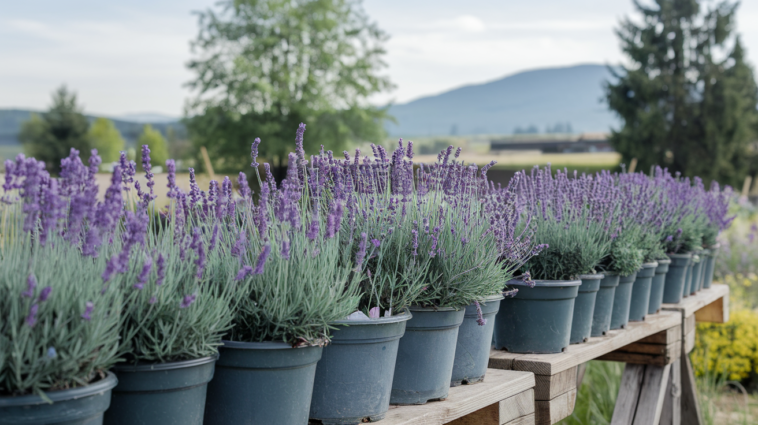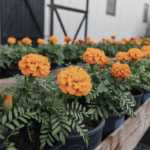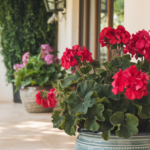Lavender is a timeless favorite among gardeners, not only for its fragrant blooms but also for its ability to thrive in containers. Whether you have limited space, poor soil conditions, or simply want to bring the charm of this Mediterranean herb closer to your home, growing lavender in pots is a rewarding experience.
With the right approach, you can enjoy a lush, fragrant display that lasts for years.
Choosing the Right Pot and Soil
The key to successfully growing lavender in containers starts with selecting the right pot. Since lavender hates excess moisture, choose a pot with ample drainage holes. Terracotta pots are an excellent choice because they allow excess water to evaporate, preventing root rot.
The size of the container also matters. Lavender has a deep root system, so opt for a pot that is at least 12–16 inches in diameter to give the plant ample space to grow.
The soil you use is equally important. Lavender thrives in well-draining soil that mimics its native Mediterranean environment. A good mix consists of potting soil blended with sand, perlite, or small gravel to improve drainage.
Avoid using rich, moisture-retentive soil, as excessive moisture is the number one enemy of healthy lavender plants.
Sunlight and Watering Needs
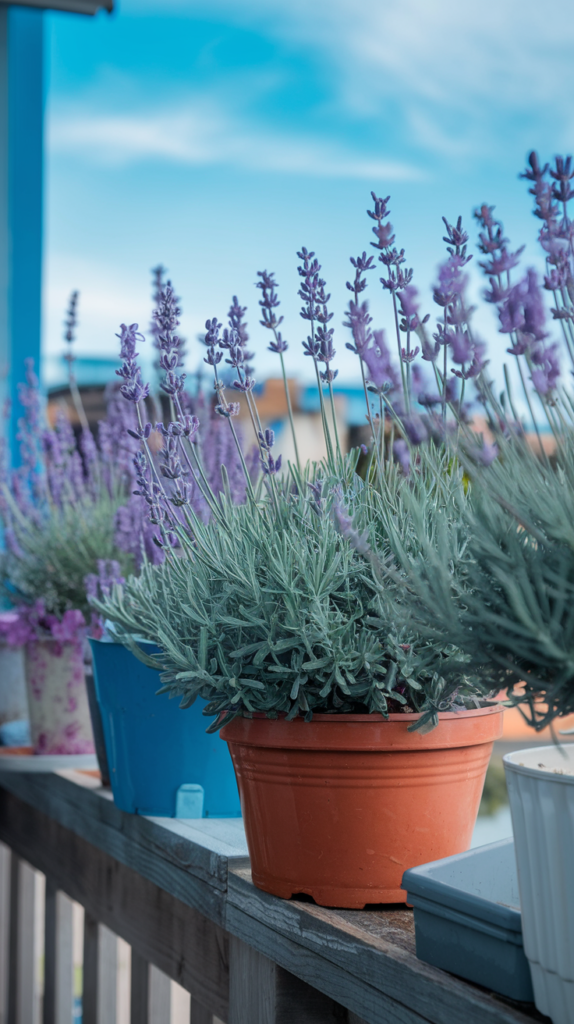
Lavender loves the sun and requires at least six to eight hours of direct sunlight daily. Placing your potted lavender in a sunny spot, such as a south-facing balcony, patio, or windowsill, ensures it receives the light it needs to flourish.
If you live in a region with intense heat, a spot with morning sun and afternoon shade can help prevent scorching.
Watering lavender correctly is essential for its health. While young plants need regular watering to establish strong roots, mature lavender is drought-tolerant and prefers drier conditions.
Water deeply when the soil is dry to the touch, but always ensure excess water drains away to prevent root rot. Overwatering is a common mistake that can quickly lead to the decline of your plant.
Pruning and Maintenance
Regular pruning helps maintain the shape of your lavender and encourages vigorous blooming. The best time to prune is after the first flush of flowers fades, typically in late summer.
Use sharp pruning shears to remove about one-third of the plant’s height, making sure to leave some green growth. Avoid cutting into the woody stems, as lavender struggles to regrow from old wood.
Deadheading spent flowers throughout the season also promotes continuous blooming. Additionally, rotating the pot occasionally ensures even growth and prevents one side from becoming leggy due to uneven sun exposure.
Winter Care and Longevity
If you live in a colder climate, protecting your potted lavender during winter is crucial. While some varieties, such as English lavender, are more cold-hardy, others may need extra care.
Bringing the pot indoors to a cool, bright location like an unheated sunroom or garage can help it survive the winter months. If keeping it outside, wrap the pot with burlap or bubble wrap to insulate the roots from freezing temperatures.
Reducing watering significantly during winter dormancy is essential to prevent root rot.
Choosing the Best Lavender Varieties for Pots
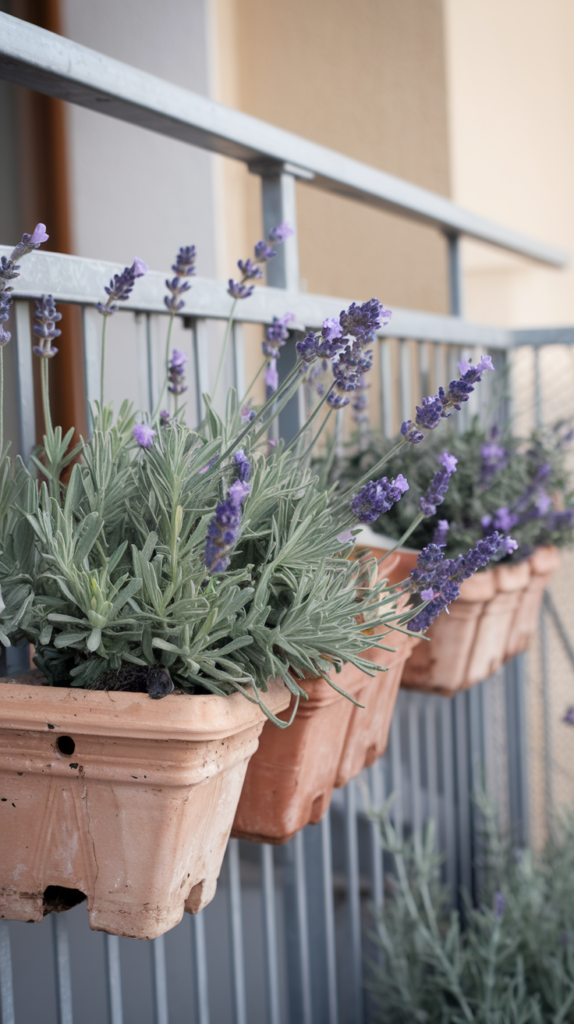
Not all lavender varieties are suited for container gardening, so selecting the right type makes a significant difference in success.
English lavender (Lavandula angustifolia), such as ‘Munstead’ and ‘Hidcote,’ is an excellent choice due to its compact growth and cold hardiness.
If you prefer a more decorative variety with showy blooms, French lavender (Lavandula dentata) or Spanish lavender (Lavandula stoechas) can be beautiful additions, though they may require extra winter protection.
For those who love a continuous bloom, Lavandin hybrids (Lavandula x intermedia), such as ‘Grosso’ and ‘Provence,’ provide longer-lasting flowers and a strong fragrance, making them perfect for cutting and drying.
Fertilization for Healthier Growth
Lavender is naturally adapted to lean, nutrient-poor soils, so heavy feeding is unnecessary.
However, to encourage strong growth and prolific flowering, a light application of a balanced, slow-release fertilizer in early spring can provide just the right boost.
Organic alternatives, such as diluted fish emulsion or compost tea, work well without overwhelming the plant with excess nutrients.
Avoid high-nitrogen fertilizers, as they promote excessive foliage growth at the expense of flowers.
Managing Pests and Diseases
One of the advantages of growing lavender is its natural resistance to many pests and diseases. However, potted plants can sometimes be more vulnerable to stress-related issues.
Root rot is the most common problem, usually caused by poor drainage or overwatering. To prevent this, always use well-draining soil and a pot with drainage holes, and avoid letting water sit in a saucer beneath the pot.
Occasionally, lavender may attract aphids or whiteflies, especially if kept indoors or in a sheltered space. A simple spray of neem oil or a strong blast of water can keep these pests under control.
If you notice fungal issues, such as powdery mildew, improving air circulation around the plant by spacing pots apart and avoiding excessive watering can help prevent outbreaks.
DIY Lavender Crafts: Creative Ways to Use Your Harvest
Once your lavender has bloomed, cut the stems just above the leaves and hang them upside down in a dry, dark place for about two weeks.
A simple and popular way to use dried lavender is by making fragrant sachets. Fill small fabric pouches with dried lavender buds and place them in drawers, closets, or under pillows to enjoy a fresh scent while repelling moths and insects.
Another favorite is homemade lavender-infused oil. By steeping dried lavender flowers in a carrier oil like almond or jojoba for a few weeks, you can create a soothing oil perfect for massages, bath soaks, or natural skincare remedies.
For those who enjoy candle-making, adding dried lavender buds to homemade soy or beeswax candles creates a calming aroma perfect for relaxation.
You can also create your own lavender sugar by mixing dried buds with granulated sugar and letting it sit for a week—this subtly floral sweetener is perfect for baking, teas, or lemonade.
Lavender: A Long-Lasting, Fragrant Companion
With the right care, lavender can be a long-lasting and beautiful addition to your home.
From preventing common problems to propagating new plants, growing lavender in pots offers endless rewards.
Whether you’re enjoying its calming scent, harvesting it for DIY crafts, or simply admiring its delicate purple blooms, lavender is a plant that truly enriches any space.
Conclusion
Growing lavender in pots is a delightful way to bring beauty, fragrance, and tranquility into your space. With the right care, your lavender will reward you with lush blooms, soothing aromas, and endless creative uses. Whether you’re sipping lavender-infused tea, crafting handmade sachets, or simply enjoying the sight of bees dancing around your plant, the joy of cultivating this versatile herb is truly unmatched.
With patience and proper maintenance, your potted lavender can thrive for years, becoming a cherished part of your home or garden. So plant, nurture, and savor the rewards of this timeless herb—your senses will thank you.
